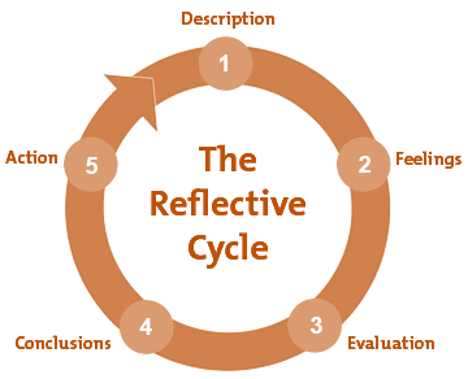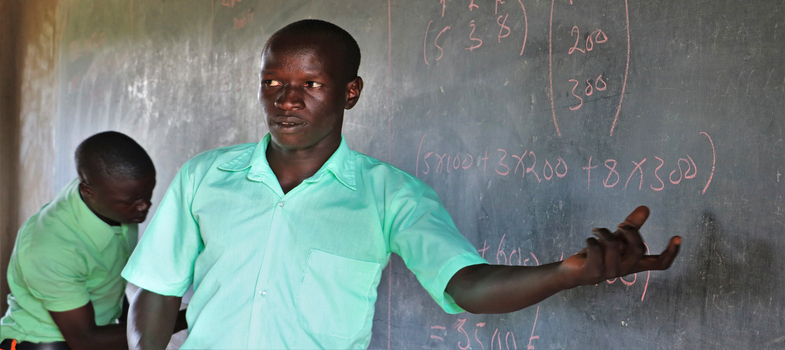The reflective cycle
Graham Gibbs, a sociologist and psychologist, developed a tool for reflective practice, called ‘Reflective Cycle’. It is a circle model which is structured in phases and breaks down the experience, allowing you to reflect upon an experiences as it happened. This tool allows you to better your performance as it is happening, as well as improving it for the future.

Figure 10: Gibbs' Reflective Cycle
1. Description
The first step of the Reflective Cycle is to describe the learning process in detail. It is important to ask yourself the questions:
What happened and who was there?
What did you do?
What was the result?
2. Feelings
Reflect upon what was thought and felt during the process. It is important to ask the questions:
How did you feel before the process?
What did you feel while it was taking place?
How were you feeling afterwards?
How do you think the other participants felt?
3. Evaluation
Thirdly, it is important to evaluate the experience. Ask yourself the following questions:
What was successful during the activity and why?
What didn’t go well?
What did you contribute?
How did others contribute?
4. Conclusion
Once the experience has been evaluated, you can start drawing conclusion about what happened. Ask yourself the following questions:
- If you were faced with the same situation again, what would you do differently.
What skills do you need to develop, so that you can handle this type of situation better?
5. Action
You should now have some possible actions to deal with similar situations more effectively in the future. Once you have a plan and identified the areas you will work on, commit to taking action and make sure to review progress.
Definition of reflective practice TAKE QUIZ 4
